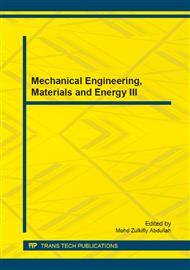p.502
p.506
p.510
p.514
p.518
p.524
p.529
p.533
p.538
Use of Logistic Approach in Optimizing the Rotary Kiln Run
Abstract:
The strategic object of the innovation process in the raw materials extracting and treatment area is a sustainable development in all its components, particularly in the material, economic, environmental and energy. The paper presents a concrete contribution to the achievement of this goal by applying the principles of logistics in technical and technological optimization of rotary kilns operation with a positive impact in the energetic field especially. Rotary kilns are a long-term core technology of heat aggregates within the mining industry. Today there is a characteristic potential optimization exhaustion of classical optimization approaches and persistent lack of a major operation - high specific fuel consumption. The article presented a solution focused at eliminating the furnace jacket heat loss, which represents around 30% of the total energy output of the burning process and the largest energetic loss. The basis of the presented innovative solutions - the controlled cooling of the furnace jacket is the perfect knowledge of thermodynamics, hydro-mechanical and rheological flows in the process of burning in a rotary kiln and logistics optimization approaches application. The developed controlled furnace cooling jacket system delivers the performance and quality of the burning, reducing an overall energy consumption for the burning process in a rotary kiln by reducing rotary kiln shell losses and by use of the outgoing heat to the surroundings for the combustion air heating.
Info:
Periodical:
Pages:
518-523
Citation:
Online since:
December 2013
Authors:
Keywords:
Price:
Сopyright:
© 2014 Trans Tech Publications Ltd. All Rights Reserved
Share:
Citation:


